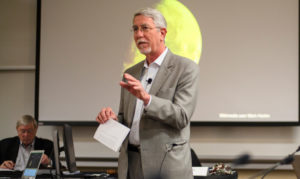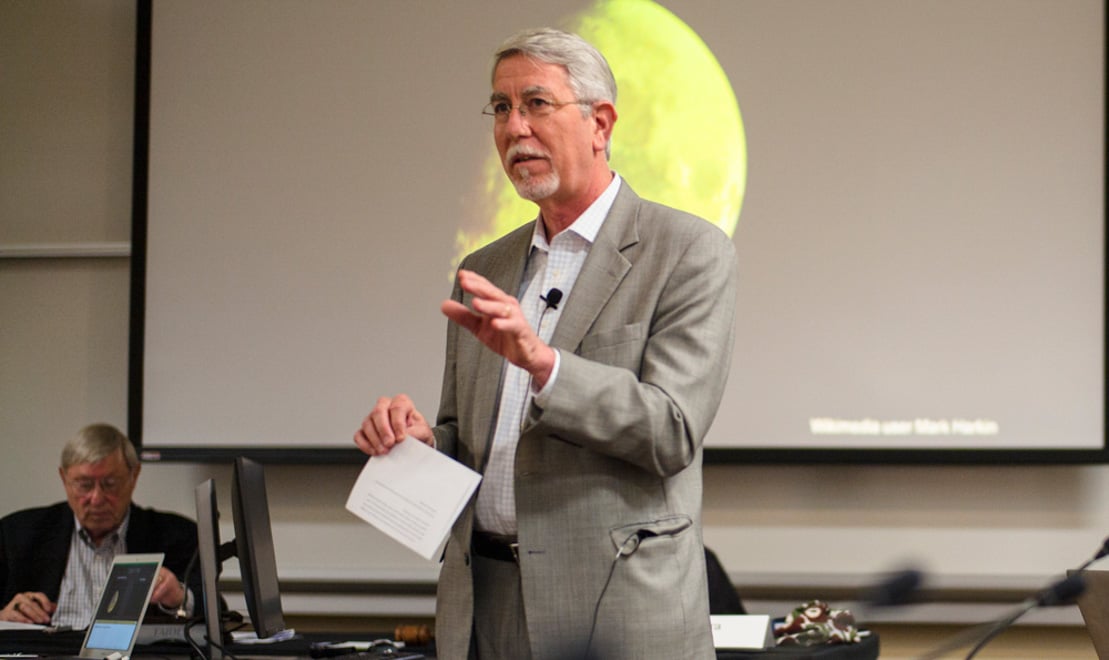At the Faculty Senate meeting last night, President Marc Tessier-Lavigne expressed support for undocumented students. The Senate also received reports on new learning spaces from the Office of the Vice Provost of Teaching and Learning (VPTL) and on mental health from the ASSU executive team.

The Faculty Senate revisited the campus reaction to the election results with Tessier-Lavigne highlighting two emails he wrote to the Stanford community and the open letter he and over 400 other university presidents signed regarding their respective universities’ support for the Deferred Action for Childhood Arrivals (DACA) program and the Development, Relief and Education for Alien Minors (DREAM) Act.
“The University supports the ability of undocumented students to continue their studies and earn their degree here,” Tessier-Lavigne said.
Provost John Etchemendy also explained Stanford’s new application for the General Use Permit (GUP) to add more campus buildings and housing. The GUP allows Stanford to build new buildings and facilities without having to apply to Santa Clara County each time it wants to create a new facility. Etchemendy hopes that the new GUP will last for the next 20 years or so.
Richard Holeton, VPTL senior director of learning environments and Tom Black, the registrar, gave a short presentation about novel forms of instruction spaces and recommended moving away from traditional lecture-style seating.
Holeton and Black argued that much of Stanford’s learning spaces have not changed to reflect advances in pedagogy and that the VPTL is working to change this situation. They pointed to improved performance in classrooms, like those in Wallenberg Hall and Lathrop Library, that utilize movable chairs and tables. However, there are significant challenges in making these changes campus-wide.
The two main challenges include lack of funding and lack of space. Holeton and Black argue that novel classrooms require more space per student, which limits classroom capacity. In addition, the VPTL is only granted enough money for renovations. Most classroom modifications are currently only applied to non-departmental learning areas such as Wallenberg Hall since reconstruction projects for departmental buildings are more concerned with maintaining their respective facilities.
After this presentation, ASSU president Jackson Beard and ASSU vice president Amanda Edelman presented their work on various issues, ranging from mental health to sustainability at Stanford to sexual assault and Title IX.
Edelman argued that many of the mental health resources, such as Counseling and Psychological Services (CAPS), have negative reputations. For instance, Edelman cited that many students mistakenly believe it would take several weeks to obtain a CAPS appointment. In reality, it takes seven days.
To combat this, Edelman and Beard encouraged faculty to help clear up this misinformation and further improve mental health resources on campus. They also articulated that professors should be understanding of students and reach out if something seems off.
“Faculty can play a role as well in supporting students in Stanford,” Beard said.
Contact Christina Ashley Pan at capan ‘at’ stanford.edu.
